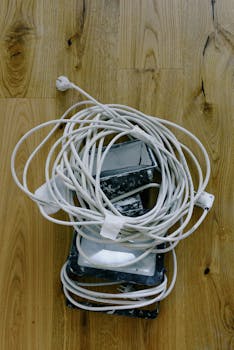Money Management
Tracking Your Spending: The Key to Financial Awareness
Learn actionable tracking spending habits tailored for online course success in Colombia. Reallocate simple savings, audit daily expenses, and maximize professional growth with practical routines.
Advertisement
Numbers on a bank statement tell a story, and sometimes, it’s a story we’re surprised to read. Even people with professional ambitions can easily lose track of spending patterns.
Learning about tracking spending goes beyond just calculating totals. It’s a habit that builds the awareness essential for choosing the right online courses and mapping professional growth in Colombia.
Explore how a few practical actions can transform the way you approach finances, develop smarter career strategies, and maximize your investment in learning and self-improvement.
Pinpoint Daily Habits to Boost Course Budgeting
Fine-tuning your daily routines has a direct impact on your ability to afford quality online courses and career development resources in Colombia.
Small changes—like logging each expense—anchor your long-term tracking spending journey and gradually reveal hidden leaks that stall professional progress.
Audit Transactions With a Morning Routine
Before breakfast, open your banking app and check for new debits. This daily tracking spending practice helps you notice anomalies and reduce impulsive payments.
Pairing this habit with a morning coffee anchors it firmly. Over time, you’ll spot opportunities to cancel non-essential subscriptions before they add up.
People who habitually check transactions often say, “I’ll check this before work,” reinforcing a proactive approach toward managing educational spending and boosting peace of mind.
Color-Code Categories for Visual Impact
Use color-coding in any spreadsheet or app to separate course fees, supplies, and snacks. Vivid visuals highlight which choices support future career goals versus short-term urges.
Seeing, for example, all ‘education’ expenses in green lets you see improvement: if green sections grow, you’re investing more in learning—right where professional growth demands it.
If orange marks pile up for coffee-shop splurges, you’ll know to adjust next week and redirect funds to your course budget instead.
| Habit | Timeframe | Effort | Result/Takeaway |
|---|---|---|---|
| Logging expenses daily | 5 min/day | Low | Promotes real-time tracking spending; creates accountability |
| Weekly category review | 30 min/week | Medium | Spot budget gaps and allocate more for online courses |
| Using color-coded tools | Ongoing | Low | Visual reminders boost awareness of education vs. impulse buying |
| Canceling unused subscriptions | 1 hr/month | Medium | Free up resources to invest in professional growth |
| Comparing monthly trends | 30 min/month | Medium | Reveals progress and signals when to adjust your learning budget |
Reallocate Everyday Savings Directly to Professional Growth
Redirecting small savings creates a direct pipeline to fund online courses and certifications vital for advancing your career goals in Colombia.
Tracking spending closely allows you to spot places to pull funds and make adjustments, fueling your ambitions with tangible steps and measurable results.
Automate Transfers to Your Learning Fund
Set up an automatic weekly transfer from your main account to a dedicated education savings pot. This routine ensures your tracking spending discipline supports intentional professional investments.
- Identify the average weekly coffee shop expense and cut one visit, transferring that amount to your online course fund. This visible shift reinforces mindful spending and builds your confidence in budgeting.
- Unsubscribe from a little-used streaming service and move the monthly cost into a separate account. This swap turns passive outlay into active professional development on any learning platform.
- Pack homemade lunches for three days per week, tracking spending with a simple tally. Each saved lunch translates into a small but significant boost to your digital learning resource budget.
- Sell unused electronics or books and put sale proceeds directly toward a new online course. Flipping idle assets into new knowledge opportunities drives professional progress forward.
- Limit non-essential online shopping with a 48-hour rule: if you still want it later, reconsider its priority. Savings go to structured professional growth activities instead.
Each small adjustment creates a feedback loop—more funds for learning, greater trackability, and enhanced motivation to stick to your professional growth plan.
Track Progress for Consistent Motivation
Record success stories in your planner, such as “redirected snack money paid for a marketing module,” reminding you of real achievements from tracking spending daily.
- Break big learning goals into monthly targets. Monitor savings contributions against each one. Visualizing each win tightens your connection to the process and reinforces long-term skill building.
- Share progress with a close friend or mentor. Hearing their feedback or advice increases your accountability for both saving and learning milestones.
- Review transfer histories from education-specific accounts every Friday. Seeing the pattern encourages steady contributions and highlights room to stretch your tracking spending habits.
- Set reminders for course registration deadlines: associating your tracked savings with real opportunities reduces procrastination and ensures you make the most of every peso.
- Reward major savings milestones—for example, with a free local museum visit or outdoor walk—cementing a positive tracking spending loop without undercutting your educational objectives.
Layered recognition keeps motivation high, making each tracking spending improvement feel meaningful and personal as you pursue professional development in Colombia.
Prioritize Course Investments With Clear Criteria
Deciding which online courses to fund requires more than enthusiasm. Sharpen your process with criteria based on skills gaps, career shifts, and clear tracking spending priorities.
Ranking them in order of urgency or impact helps you focus resources where they matter most for tangible professional gains.
Apply the “Needs First” Sorting Rule
Draft a list of required skills, then match courses directly to these needs. In Colombia’s job landscape, this could mean focusing on bilingual improvement first or industry-relevant certifications.
Scan your tracked spending for duplicate training topics. If two courses cover similar ground, select the one with better peer reviews or direct employer relevance to avoid redundancy.
List reasons for targeting each course, for example, “I’m aiming for a project management role next year,” to ensure financial outlay aligns with defined career objectives and tracking spending results.
Balance Immediate Application With Long-Term Value
Rank courses by how soon you can use their contents practically—”This Excel course will help me on a project next month,” takes priority over broader, less urgent options.
Factor in the course’s cost-to-impact ratio: higher-fee options are justified when backed by testimonials or case studies from Colombian professionals in your sector.
Monitor discount or scholarship windows closely and adjust your pacing. Flexibility in spending timing increases your likelihood of maximizing value while maintaining strict tracking spending guidelines.
Conclusion: Make Every Peso Work Harder for Your Learning
Daily tracking spending habits provide a transparent, reliable basis for making confident educational choices in Colombia’s busy online course marketplace.
Practical routines—like morning audits, visible budgets, and automatic allocations—ensure resources flow steadily from daily savings into your most impactful professional growth investments.
Keep refining your system, celebrate small wins, and stay mindful: tracking spending isn’t just a chore—it’s your strongest ally in building a thriving, future-focused career in Colombia.





